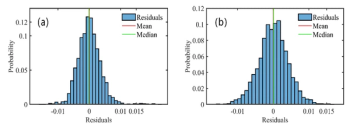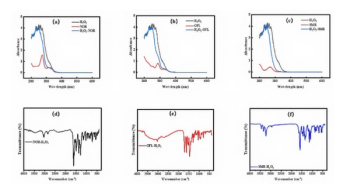
- Spectroscopy-01-01-2015
- Volume 30
- Issue 1
Elemental Analysis of Goji Berries Using Axially and Radially Viewed Inductively Coupled Plasma–Optical Emission Spectrometry
A method for the multielemental determination of metals and nonmetals in goji berries (Lycium barbarum L.) by axially and radially viewed inductively coupled plasma-optical emission spectrometry (ICP-OES) is presented.
A method for the multielemental determination of metals and nonmetals in goji berries (Lycium barbarum L.) by axially and radially viewed inductively coupled plasma-optical emission spectrometry (ICP-OES) is presented. The accuracy of the entire proposed method was confirmed by three certified reference material analyses, and the certified values showed a good agreement at a 95% confidence limit (Student's t-test).
Goji berries or wolf berries (Lycium barbarum L.) have traditionally been used as food and a medicinal plant. The berries grow in China, Tibet, and other parts of Asia. The ripe fruit has been used in Asian countries as a traditional herbal medicine and functional food. The berries are eaten raw, and drunk as a juice, wine, or tea. They can also be processed to form tinctures, powders, and tables (1,2).
The interest in the chemical composition of goji berries has intensified because of an increased awareness of their possible health benefits; they are a rich source of nutrients and phytochemicals, such as organic acids, sugars, phenolic compounds, and minerals (3). Goji berries contain polysaccharides, vitamin C, vitamin B complex, vitamin E, and 18 amino acids (including eight essential amino acids not produced by the human body) (2).
In relation to its elemental chemical composition, studies have shown the presence of 21 elements, including Zn, Fe, Ca, Se, Ge, and P (2). Llorent-Martínez and colleagues (4) determined 26 elements (Ag, Al, As, Ba, Be, Ca, Cd, Co, Cr, Cu, Fe, Hg, K, Mg, Mn, Mo, Na, Ni, P, Pb, Sb, Se, Sn, Tl, V, and Zn) by inductively coupled plasma–mass spectrometry (ICP-MS) in some exotic superfoods. However, the authors did not detect Ag, As, Be, Cd, Hg, Sb, Se, Sn, Tl, and V in some brands.
Goji berries have been widely used as a popular functional food and are called a "superfruit" or "superfood" because of the large variety of beneficial effects, including reduction of blood glucose levels and serum lipids, anti-aging effects, immune-modulation, anticancer effects, antifatigue effect, and male fertility-facilitatory actions (1,5). Concentrated extracts and infusions show beneficial vision, kidney, and liver functions (1). The recommended dosage of dried berries used as medicine is 5–12 g (6).
Because of the health benefits of goji berries, it is necessary to determine their mineral composition, mainly the essential elements, to deduce the value of this functional food as a mineral source. To accomplish this, the present work reports the results obtained by the proposed method for the simultaneous determination of metals (Al, Ba, Cu, Fe, Mg, Mn, and Zn) and nonmetals (P and S) in goji berries by using axially and radially viewed inductively coupled plasma–optical emission spectrometry (ICP-OES), following digestion using a diluted oxidant mixture in a closed-vessel microwave oven. The use of a closed-vessel microwave oven and diluted oxidant mixture shows several advantages, such as short heating times (20–40 min), low reagent volume requirements, minimization of residue generation, costs of analysis, and blank values, improving the limits of detection (7).
Experimental
Instrumentation
An iCAP 6300 Duo ICP optical emission spectrometer (Thermo Fisher Scientific) equipped with axially and radially viewed plasma was used throughout. The spectrometer was equipped with a simultaneous charge injection device (CID) detector that measures from 166.25 nm to 847.00 nm. The echelle polychromator was purged with argon. The introduction system was composed of a cyclonic spray chamber and a Meinhard nebulizer. The injector tube diameter of the torch was 2.0 mm. The instrumental parameters were as follows: a power of 1350 W, an auxiliary gas flow rate of 0.2 L/min, a nebulizer gas flow rate of 0.45 L/min, a coolant gas flow rate of 15 L/min, and a pump rate of 25 mL/min. The analytical wavelengths for each element were as follows: Al(I) = 309.200 nm (axial), Ba(I) = 455.404 nm (radial), Cu(II) = 324.700 nm (axial), Fe(I) = 259.948 nm (axial), Mg(I) = 285.213 nm (axial), Mn(I) = 257.618 nm (axial), P(I) = 213.600 nm (axial), S(II) = 180.731 nm (axial), and Zn(I) = 206.200 nm (axial).
An analytical balance (Mettler Toledo) was used to weigh the samples. The samples were dried using a freeze dryer (Thermo Fisher Scientific). After this, the dried goji berries were ground in a knife mill grinder (Grindomix, GM 200, Retsch). The acid sample decomposition was executed in a closed-vessel microwave oven (Speedwave 4, Berghof).
Reagents and Samples
All solutions were prepared from analytical reagent-grade chemicals and high-purity deionized water obtained from a Milli-Q water purification system (Millipore). A solution of analytical grade 65% (w/v) HNO3, distilled in a quartz subboiling still (Marconi) and 30% (w/v) H2O2 (Merck) were used for the sample digestion. Analytical-grade Tritisol solutions of 1000 mg/L of Al (Al(NO3)3), Ba (BaCl2), Cu (CuCl2), Fe (FeCl3), Mg (MgCl2), Mn (MnCl2), P (H3PO4), S (H2SO4), and Zn (ZnCl2) from Merck were used to prepare the reference analytical solutions for the instrumental calibration. A solution containing 1.0 mg/L of Mg (Merck) was used to evaluate the robustness of the spectrometer (8).
Samples of goji berries (fruit) were purchased from the local market of Sao Paulo, Brazil. Three brands (G1, G2, and G3) and one without a defined brand (G4) were acquired, totaling approximately 250 g of the fruit. The geographic origin (China) was defined for one brand.
The accuracy of the elemental determination method by ICP-OES was evaluated by analyzing three certified reference materials (CRMs) from the National Institute of Standards and Technology (NIST) with a similar sample matrix: apple leaves (SRM 1515), pine needles (SRM 1575a), and soy flour (SRM 3234).
ICP-OES Optimization
The Mg(II) 280.2 nm/Mg(I) 285.2 nm emission line intensity ratio was used to check the robustness of the ICP system (9). The radio frequency power was varied from 750 W to 1350 W and the other instrumental parameters of the spectrometer were held constant.
To check the matrix effects on the sensitivity and selectivity, a scan of the emission lines was obtained from the standard solution containing 10 mg/L of each analyte and the digested sample. With this experiment, it was possible to choose the best analytical emission line and the signal-to-background ratio (SBR) for all elements. After this, the background correction was manually selected for all the emission lines for quantitative measurements.
The limits of detection (LOD) were calculated using the background equivalent concentration (BEC) and SBR, according to the International Union of Pure and Applied Chemistry (IUPAC) recommendations (IUPAC, 1978):
where Crs is the concentration of the multielemental reference solution (10 mg/L), Irs and Iblank are the emission intensities for the multielemental reference (10 mg/L) and blank solutions, and RSD is the relative standard deviation for 10 consecutive measurements of a blank solution. The limits of quantification (LOQ) were calculated as 10 × LOD (8).
Sample Preparation
Approximately 30.0 g of each goji berry sample was dried in the freeze dryer for 48 h. The dried samples were ground in a knife mill grinder, applying two cycles of 5000 rpm for 30 s. The acid decomposition was performed in a closed-vessel microwave oven using 0.2 g of the sample or CRMs and the diluted oxidant mixture, containing 2.0 mL of nitric acid (65%, v/v), 1.0 mL of hydrogen peroxide (30% v/v), and 3.0 mL of deionized water. The heating program was executed in three steps: step 1 (temperature: 140 °C, ramp: 5 min, and hold 1 min), step 2 (temperature: 140 °C, ramp: 4 min, and hold 5 min) and step 3 (temperature: 200 °C, ramp: 4 min, and hold 10 min), using 725 W of power and a maximum pressure of 50 bar. The final volume was diluted up to 10.0 mL with deionized water. The digestion procedure was done in triplicate for each sample.
Results and Discussion
Analytical Performance of ICP
The term robustness was proposed to represent the efficiency of the energy transfer and response of the plasma to a change in the atomization and excitation conditions, and the chemical composition of the aspirated solution. When the plasma operation is close to the local thermodynamic equilibrium, the Mg(II)/Mg(I) ratio is higher than 8. This value indicates an effective energy transfer from the plasma to the analytes flowing through the central channel (9). A good response was observed using the standard nebulizer gas flow rate of 0.45 L/min.
Maintaining the same outer gas, the best raw intensity to background ratio was obtained when 1350 W was applied. Under these conditions, the Mg(II)/Mg(I) ratios were 12.4 and 10.3 for axially and radial viewed, respectively.
Figures of Merit
Characteristic parameters of the analytical calibration curve, such as linear range, correlation coefficient (R2), limits of detection (LOD), and limits of quantification (LOQ), are presented in Table I. The LOD and LOQ are obtained in micrograms per gram by considering the sample mass of 200 mg and a final volume of 10 mL. The average RSD (%) for repeatability of the calibration solution measurements (n = 5) ranged from 0.25 (for Ba and Zn) to 0.39 (for P). The average RSD values for the repeatability of digested sample measurements (n = 3) varied from 3.7% (for S) to 14% (for Ba), providing evidence of a good level of precision. The worst result was observed for Zn (RSD = 27% only for the G3 sample).
Table I: Figures of merit: linear range, correlation coefficient (R2), LOD, and LOQ and accuracy evaluation (analysis of CRMs)
The quality of the results obtained by using the entire analytical procedure were checked by analyzing three CRMs, which were subjected to the same experimental steps adopted for the samples. The comparison between the experimental and certified values for all analytes is presented in Table I. The results obtained showed that the method is selective and accurate. They are in good agreement considering a Student's t-test at a 95% confidence limit.
It is important to point out that the CRM analysis allowed us to verify the sample digestion efficiency in a closed-vessel microwave oven, with the diluted oxidant mixture and an absence of chemical and spectral interferences during elemental determination by ICP-OES. The oxidant mixture of HNO3 + H2O2 provides a high oxidizing power, aided by the presence of water. Water is a highly dipolar molecule, and thus it is suitable for an efficient interaction with microwave radiation. Hence, the use of water promotes an increase in the pressure and temperature inside the closed vessels during sample digestion (8).
Elemental Composition of the Samples
The element concentrations using the robust conditions previously established are shown in Table II. The standard deviations (SD) are related to the expanded error associated with the instrument measurements (n = 3) and the three analyses of each sample. As expected, Mg, P, and S can be considered the macroelements in these samples. It is important to highlight that essential and nonessential element concentrations are dependent on the soil characteristics, the physiology of the plant, the water source composition, and fertilizers, insecticides, pesticides, and fungicides used at the plantations. Plants can absorb, carry, and accumulate chemical elements. Each species has its own requirements and differing levels of tolerance when absorbing and accumulating an element. The movement of the inorganic constituent is selectively controlled by the plant, with some being easily absorbed and others impeded to different degrees (7).
Table II: Elemental concentration in goji berries obtained by ICP-OES
Studies involving the chemical composition of superfoods are important from nutritional and toxicological points of view. The amount of an essential nutrient considered adequate for human requirements is termed the dietary reference intake (DRI). The Food and Drug Administration (FDA) regulations require nutrition labeling for most foods. Reference daily intakes (RDIs) for some essential human nutrition elements and daily reference values (DRVs) have been established, namely Cu (2 mg), Fe (18 mg), Mg (400 mg), Mn (2 mg), P (1000 mg), and Zn (15 mg) (10). Considering the concentration of the elements on the different goji berry samples (Table II) and the recommended manufacturer dosages of 10 g and 30 g (4), the masses of these elements ingested were 52–207 μg (Cu), 0.56–2.1 mg (Fe), 6.5–32 mg for Mg, and 15–62 mg for P. Considering a goji berry consumption of 30 g, the contribution percentages to DRVs were 11%, 12%, 8%, and 6% for Cu, Fe, Mg, and P, respectively.
In general, the elemental concentrations in all samples decreased in the following order: P > Mg > S > Fe > Al > Cu. For all the study samples, the Ba, Mn, and Zn concentrations were below the LOQ. The difference in the elemental concentration between the samples can be the result of variations in the geographic origin and cultivation conditions. There are approximately 70 species of Lycium growing in temperate to subtropical parts of North America, South America, southern Africa, Eurasia, and Australia (1).
Analytical methods for essential element determinations in the goji berry are still limited. It is imperative to acquire more information about the chemical composition and conduct studies on the chemical speciation and bioavailability of this functional food. At the same time, toxic element concentrations should also be determined. Llorent-Martínez and colleagues (4) found low concentrations of Cd, Pb, and Sn that did not represent a risk to human health. Additionally, there is no known toxicity reported on the goji berry in the scientific literature or in traditional Asian herbal medicine textbooks (1).
Conclusions
A simple, robust, and reliable analytical method for the simultaneous determination of macro- and microelements in goji berries by axially and radially viewed ICP-OES was established. By analyzing three CRMs, it was observed that the effectiveness of a closed-vessel microwave oven in combination with the diluted oxidant mixture (2.0 mL HNO3 + 1.0 mL H2O2 + 3.0 mL H2O) to digest the high organic content of the samples analyzed in this work and absence of chemical and spectral interferences in the elemental determination by ICP-OES. The results presented in this article enhance the knowledge of the elemental composition of goji berries, a superfood, widely consumed for their functional properties. Additionally, this work will help aggregate information in the toxicological and nutritional fields.
Acknowledgments
Juliana Naozuka (JN) (2012/11517-1) and Cassiana Seimi Nomura (CSN) (2012/11998-0) are grateful to the Fundação de Amparo à Pesquisa do Estado de São Paulo and Conselho Nacional de Desenvolvimento Científico e Tecnológico (475282/2013-2 JN and 475455/2013-4 CSN), for financial support. Flávio de Oliveira Leme (FOM) and Daniel Menezes Silvestre (DMS) are grateful to Fundação de Amparo à Pesquisa do Estado de São Paulo and Conselho Nacional de Desenvolvimento Científico e Tecnológico, respectively, for the fellowship provided.
References
(1) H. Amagase and N.R. Farnsworth, Food Res. Int.44, 1702–1217 (2011).
(2) P.G. Pai, U. Habeeba, K. Ramya, M.S. Pradeepthi, and Y. Belagali, Int. J. Pharm. Sci. Res.5, 1411–1415 (2014).
(3) M. Mikulic-Petkovsek, V. Schmitzer, A. Slatnar, F. Stampar, and R. Veberic, J. Food Sci.77, C1064–C1070 (2012).
(4) E.J. Llorent-Martínez, M.L. Fernández-de Córdova, P. Ortega-Barrales, and A. Ruiz-Medina, Microchem. J.110, 444–451 (2013).
(5) Q. Luo, Y. Cai, J. Yan, M. Sun, and H. Corke, Life Science76, 137–149 (2004).
(6) O. Potterat, Planta Med.76, 7–19 (2010).
(7) J. Naozuka, E.C. Vieira, A.N. Nogueira, and P.V. Oliveira, Food Chem.124, 1667–1672 (2011).
(8) G.C.L. Araújo, M.H. Gonzalez, A.G. Ferreira, A.R.A. Nogueira, and J.A. Nóbrega, Spectrochim. Acta57B, 2121–2132 (2002).
(9) J.M. Mermet and E. Poussel, Appl. Spectrosc.49, 12–18 (1995).
(10) S.P. Dolan and S.G. Capar, J. Food Compos. Anal.15, 593–615 (2002).
Angerson Nogueira Nascimento and Juliana Naozuka are with the Universidade Federal de São Paulo in São Paulo, Brazil. Daniel Menezes Silvestre Flávio de Oliveira Leme, and Cassiana Seimi Nomura are with the Instituto de Química at the Universidade de São Paulo in São Paulo, Brazil. Direct correspondence to:
Articles in this issue
almost 11 years ago
IR Spectral Interpretation Workshopalmost 11 years ago
Next-Generation Infrared Spectroscopic Imagingalmost 11 years ago
Quantifying Proteins by Mass Spectrometryalmost 11 years ago
Down to Earth: Measurements of Geological, Coal, and Soil Samples with LIBSalmost 11 years ago
A Matter of Interpretationalmost 11 years ago
App of the Month: SpectrumLITEalmost 11 years ago
Vol 30 No 1 Spectroscopy January 2015 Regular Issue PDFNewsletter
Get essential updates on the latest spectroscopy technologies, regulatory standards, and best practices—subscribe today to Spectroscopy.


![Figure 3: Plots of lg[(F0-F)/F] vs. lg[Q] of ZNF191(243-368) by DNA.](https://cdn.sanity.io/images/0vv8moc6/spectroscopy/a1aa032a5c8b165ac1a84e997ece7c4311d5322d-620x432.png?w=350&fit=crop&auto=format)

